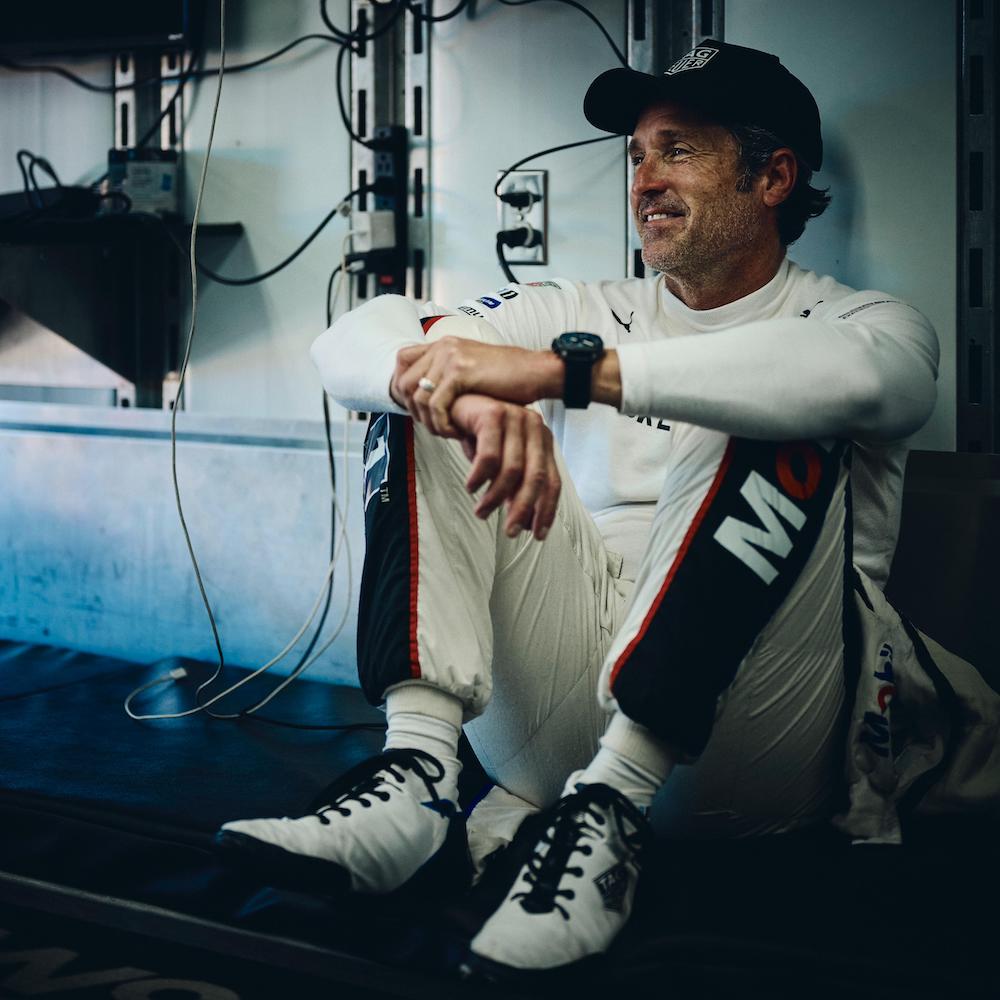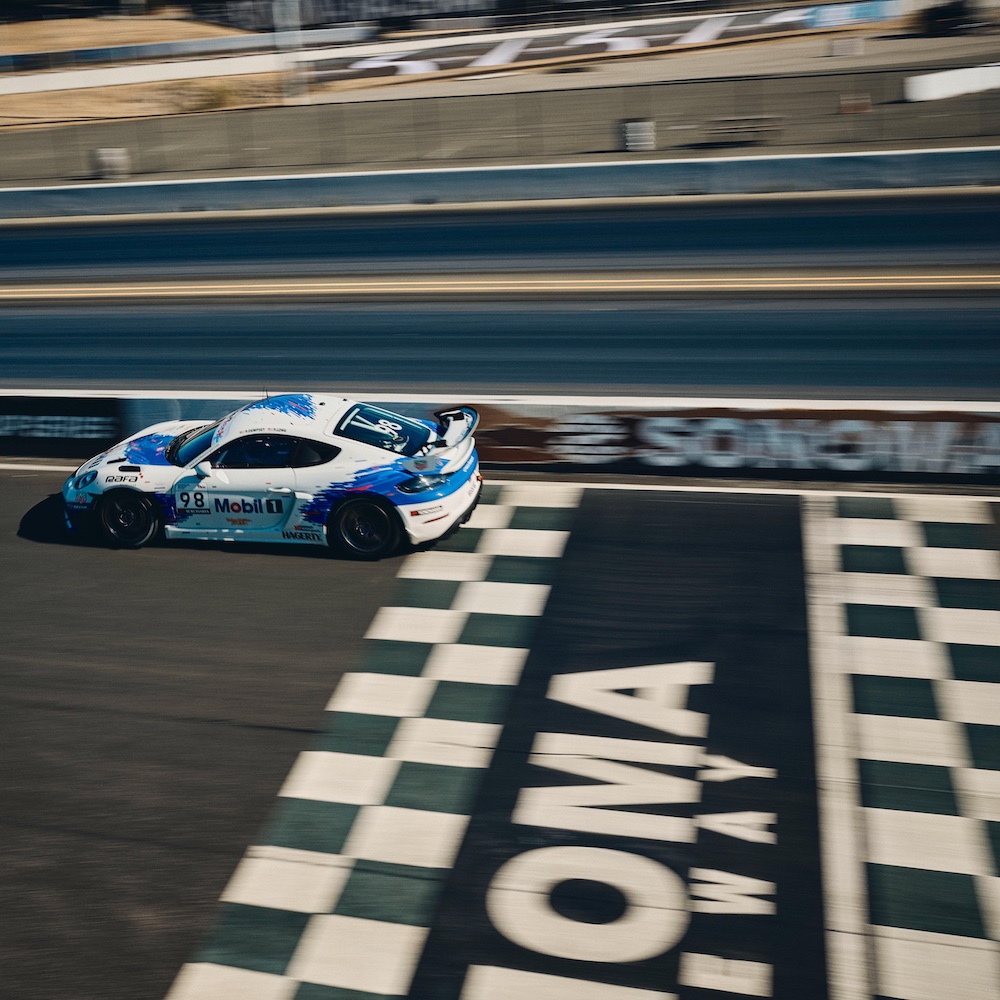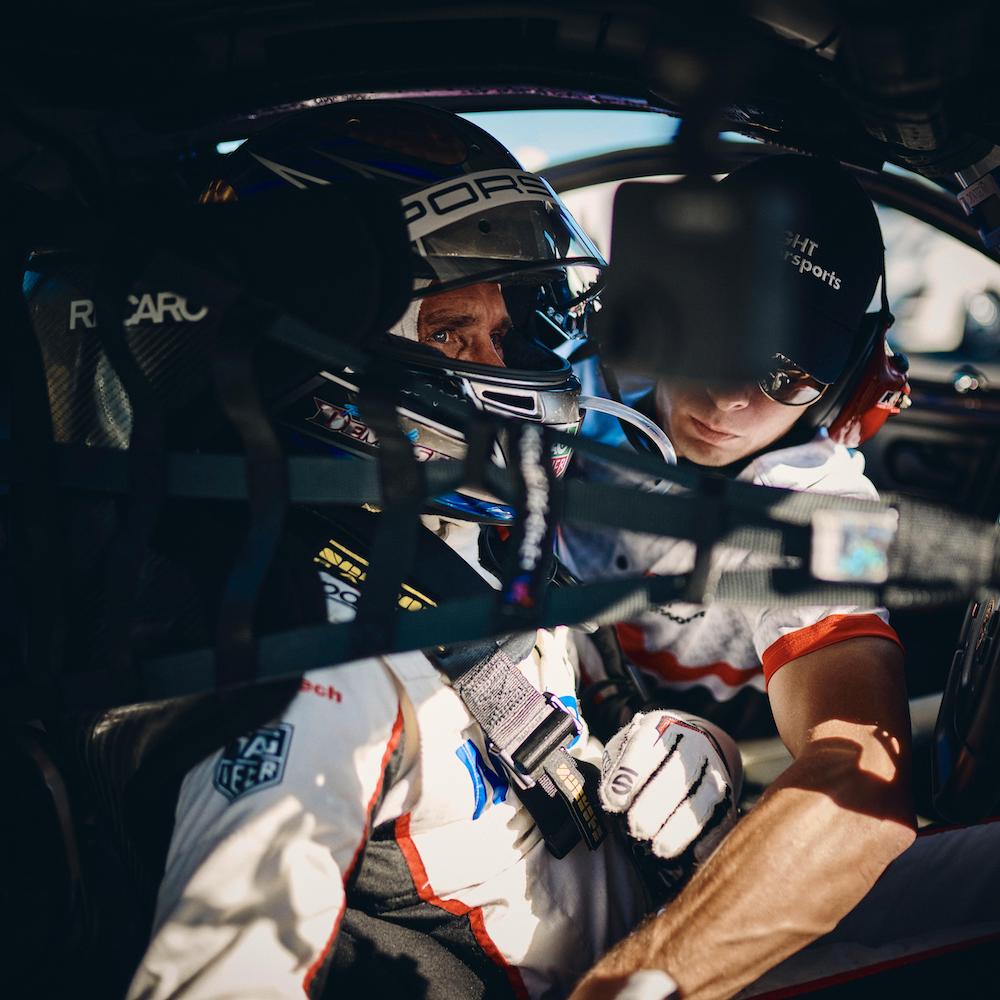Covering Patrick Dempsey’s racing career was good fun when he entered the sport in the late 2000s. To many of his fans, Dempsey was a lead actor in “Grey’s Anatomy,” one of the most popular TV shows at the time, but there was a different side to Dempsey as he embarked on a secondary career in the former Grand Am Rolex Series sports car championship.
Grand Am was renowned for its great racing, but it wasn’t burdened with immense popularity, and that meant Dempsey — despite serving as the top name at each event — wasn’t constantly mobbed by fans. It would change a few years later as he moved up to the American Le Mans Series and then went on to race on the sport’s biggest stage at the 24 Hours of Le Mans, but in those early Grand Am days, Dempsey could leave the celebrity behind and be seen and treated as just another racer by his teammates and rivals.
The relative simplicity and purity of those times would be gradually surrendered as full-time racing in the ALMS and FIA World Endurance Championship — in teams he either owned or co-owned — dominated Dempsey’s life with constant domestic and international travel, all while filling the rest of his time with TV and movie projects.
The untenable pace and demands came to a head after the 2015 season; having achieved most of his dreams and goals in racing, Dempsey decided to step away from the sport and focus on his family and first career.
And like most racers, the passion that led him to climb inside the cockpit wouldn’t remain extinguished. Signed to play racing legend Piero Taruffi in Michael Mann’s film Ferrari, it was the driving that led Dempsey back to active competition in 2024 with American ace Patrick Long in the Porsche Endurance Challenge, which is the subject of the new documentary “Destined to drive: Patrick Dempsey’s return to racing,” which airs Sunday on FOX Sports 1 after the NASCAR Cup race.
MARSHALL PRUETT: With the release of the new documentary chronicling your return to the driver’s seat, it’s been interesting to see fans posting reactions to it, saying, “I got into sports car racing because of Patrick Dempsey!” That must be an interesting thing to experience.
PATRICK DEMPSEY: It’s fascinating, and I think it’s really cool because we’ve seen this resurgence — you’ve seen Drive to Survive turn everything upside down for motorsport and give it a platform where people are like, “Oh, wait, there’s humanity behind this. It’s not just some cars running around.”
People are getting to know the personalities. I wasn’t sure what the reaction would be, but it’s nice that it’s positive.
PRUETT: My father was an amateur racer so I grew up with this as my passion and it became my profession since my teens. And I love that is also a part of your arc in racing, even though you didn’t get into it actively until later in life. You had already achieved incredible success in your profession, but you discovered racing, and you loved it, and you drove to considerable success behind the wheel. Then you stepped away for a bit only to come back and say, “OK, this damn thing is in my veins.” Tell me about that side, because I think it resonates with anybody who chases a passion in life.
DEMPSEY: My father was a really big racing fan, too. He was a team owner at one point. You know, living in the South — short tr ack, he’d have a car, he had a bar, and then he would advertise his bar with his car. Some of my earliest memories were listening to the Indy 500 in the front seat of the station wagon because they would delay the telecast in those days, back in the ’70s, so I would listen to the race. And then we’d all gather around and watch the 500 together. That was at the height of the 500 where it was the race of the year.
And then we would watch the Formula 1 races. Monaco usually had a good televised race in the ’70s. And then, of course, you had Daytona and all those things. So, I grew up with racing.
And certainly, I love ski racing. Ski racing for me was what I really wanted to do as a kid, and I kind of fell into acting accidentally. What’s really interesting is I’ve got this program coming up to race with Ingemar Stenmark in Europe this year, who was my idol. He was my childhood idol. Until Mikaela Shiffrin came along, he was like the best skier of all time. So, I always loved racing and competing. Then I got into acting, but I always followed racing.

It was when I first started dating my wife that she gave me a three-day Skip Barber Driving School certificate. That opened Pandora’s box. But I was always watching races at that time, and in the ’90s, you could get the Speed Channel. You’re watching all the races and I remember going to a charity event in Atlanta where I met Don and Dan Panoz. Next thing, I’m bidding on a hot lap at Petit Le Mans. That really kind of got me hooked. I did the racing school, and then just moved up in that Panoz racing series and it just took off.
My goal was always to get to Le Mans. That was the goal: to have enough experience to be competitive and to work my way up. And then finally, in 2015, it all kind of came together. We got a good ride, a full ride with Porsche. Before that, we went in 2009 with Ferrari. And then ’13, ’14, to ’15 with Porsche.
And then in ’15 it was just… you know, having a family, having the career, trying to balance it all, something’s gonna get sacrificed, and I was just gone too much, and I finally achieved my original goals. I remember when we were on the verge of winning our first race in Japan, and I felt the energy shift where it was like, “OK, it’s time to go back home.”
I needed to be present for my kids and for my wife and be home because I was just gone all the time. It had taken such a big toll, and I was exhausted. I didn’t do anything for a while. Then the Ferrari project came about, and that reignited everything again.
PRUETT: Having to focus on family and work — that’s something everybody can relate to. But talk about what it was like when, after setting racing aside, you got that competitive tickle again. How did that inner conversation go? Because not every person is successful in coming back to racing.
DEMPSEY: Yeah, it was more psychological. My son was like, “Dad, you know, you should get back into it. You miss it so much. You talk about it. We watch it.” We’d been watching racing and I was taking him karting and then I talked to my wife, saying, “You know, it’s really important for me in my work with Tag Heuer as an ambassador, we do a lot of driving events and I’m going to the track, but I’m not having fun if I’m just sitting trackside. I’d like to do a little bit of racing, just to get the muscle back and toned up.” That’s how it began.
And then I remember calling Michael Mann, because I’d been tracking the Ferrari movie for 10 years, and that was always the period I wanted to make a movie like The Limit — you remember that book? I love that period in the ’50s. To me, it’s the most romantic period. So, I reached out to Michael. He and I had always run into each other at different car events, and he said, “Come on in. Let’s have a conversation because you’re too old to play everything. But what about this (Piero Taruffi) role?” And I said, “Yeah, I’ll do it. I’ll definitely do it.”
Then the stunt coordinator reached out to me and said, “Hey, you want to do your driving yourself? You OK with that?” I’m like, “Yeah, absolutely.” We started doing some testing and then I just… there was something that changed in my brain chemistry where I woke up and there was a different level of consciousness. You know what I’m talking about? There was just…there was an awareness. I felt like I had just emerged from a deep coma and was back into a whole other mindset.
Marino Franchitti was over there, and we were all testing together, and he’s like, “Your lap times are getting quicker.” I go, “I know, I’m starting to push a little bit more.” We started getting into it, and I just kept pounding around. I’d come in, we would put some fuel in the car — we had a Caterham at the time — and that’s how it got started.

